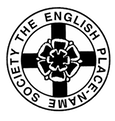Marlow (Great and Little)
Early-attested site in the Parish of Ibstone
Historical Forms
- Merelafan 1015 KCD722
- Merlaue 1086 DB c.1110 Abingd 1225 P 1182 FF(P) 1196 Ch Steph Fees 1275 1237–40
- Merlaw(a) 1189 P 1195 Cur(P) 1204 Fines
- Merlauia 1208 Fees313 1209–19 WellsR
- -low 1328 Pat
Etymology
After this the forms are not of much interest. Mar -first appears in 1447 (IpmR),-low in 1328 (Pat). Great Marlow is called Chipping Marlow first in 1304 (Cl Chepyng ) from the market there, v. cieping . Little Marlow is also called Minchin Marlow from the nunnery there (cf. OE myncen , 'nun').
The second element in this difficult name must originally have been OE lāf , 'remainder,' used specially of what is left or bequeathed but also of what remains behind after some action, e.g. hamera lāf , 'hammers-leaving,' is used poetically of a sword, while ȳðlāf , i.e. 'wave-leaving,' is used in poetry of the shore. The an is Late OE for um , the dat. pl. suffix. The plural may simply record the fact that already in the 11th cent. there were two distinct settlements at Great and Little Marlow or it may be that OE laf when used in p.n. was used in the plural, like its OHG cognate laiba , which has given rise to many German p.n. in leben , originally a dat. pl. In the case of these names and in that of the cognate Dan . names in lev the first element is apparently always a pers. name but such seems impossible here. Rather, we must take the first element as OE mere , 'mere,' the reference being to the 'lakes,' as they are still called, which lie to the S.W. of the town of Great Marlow, near the Hare and Hounds PH. Mr A. H. Cocks of Poynatts says that doubtless the 'lakes' were larger before any drainage was done, and he had always taken Marlow to be 'hill by the mere.' Instead of taking the suffix to be hlaw , we must take it to be laf , and interpret the whole name as descriptive of the settlement which grew up on the northern shore (cf. ȳðlāf supra ) of the mere , which doubtless shrank as it was drained. In other words, Marlow was built on what was left by the mere as it retreated. That this would suit the medieval topography of Marlow is curiously confirmed by a passage in William of Malmesbury's life of St Wulfstan (Anglia Sacra , i 260). He tells how the bishop was on his way to court and stopping at Marlow (Merlave ) when, in accordance with his usual practice, he determined to go to church. It was a good way off and the road was muddy enough to deter anyone from going even by day. He got into difficulties even though he had a local guide, for in a fit of ill-humour his guide took him where the marsh was excessively watery and the road very steep. The result was that the bishop got up to his knees in mud and lost one of his shoes, ultimately returning to his inn with completely frozen limbs.
It is clear that the suffix was modified in later days under the influence of the similar sounding and more common lawe , lowe . Professor Ekwall calls attention to the phrases in a late copy of an OE charter (BCS 1187), andlang lauen , fram Þe lauen , also dealing with a marshy district, which may possibly have to be brought into relation with this name.
